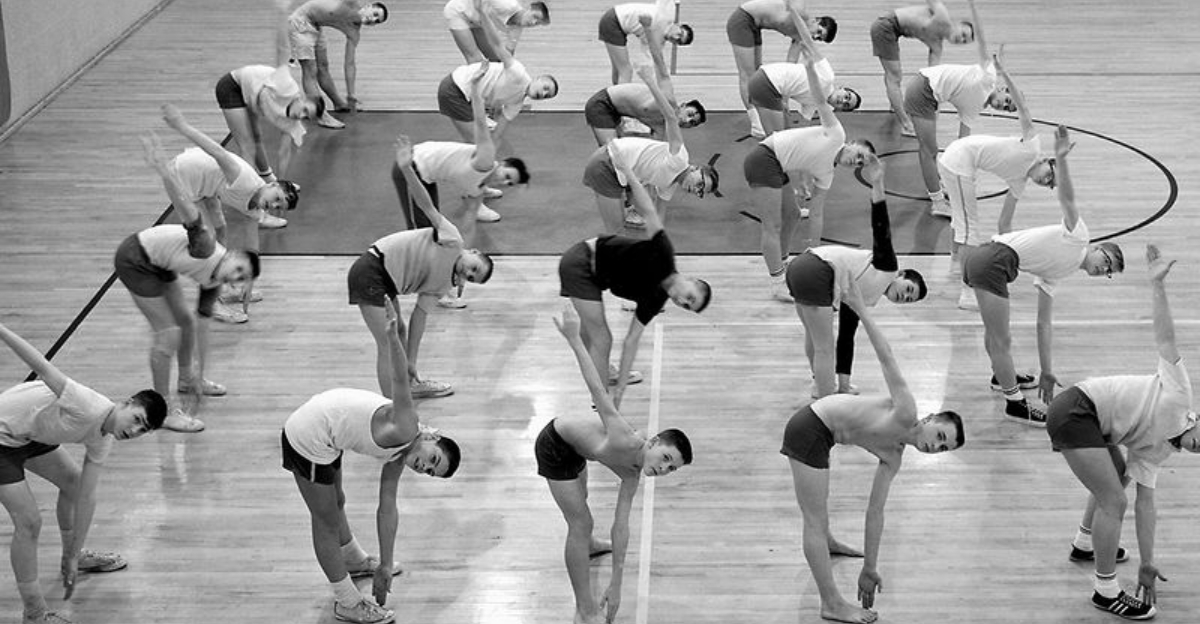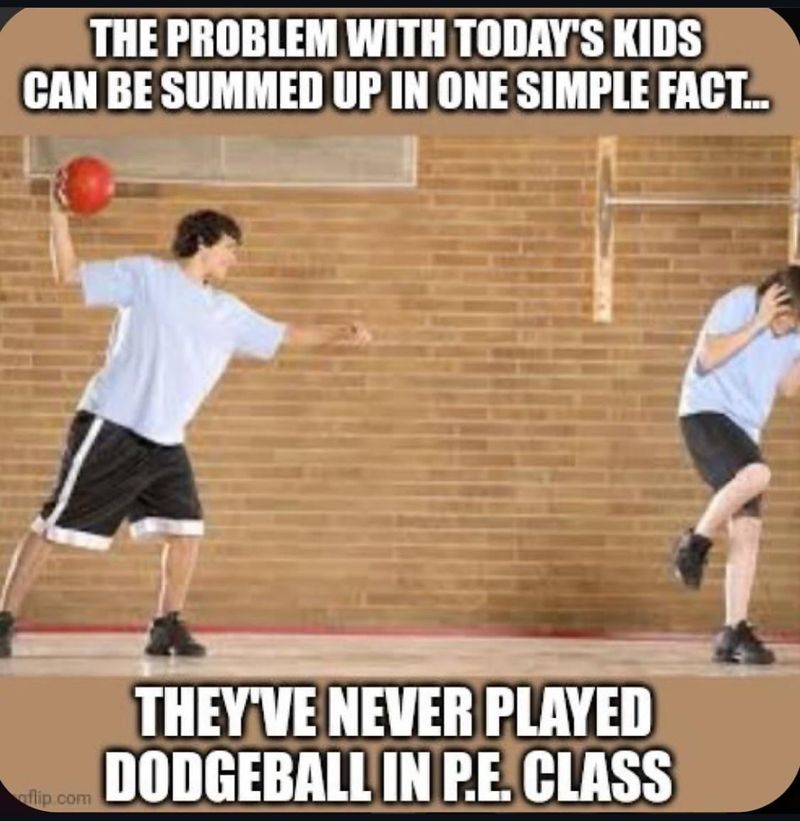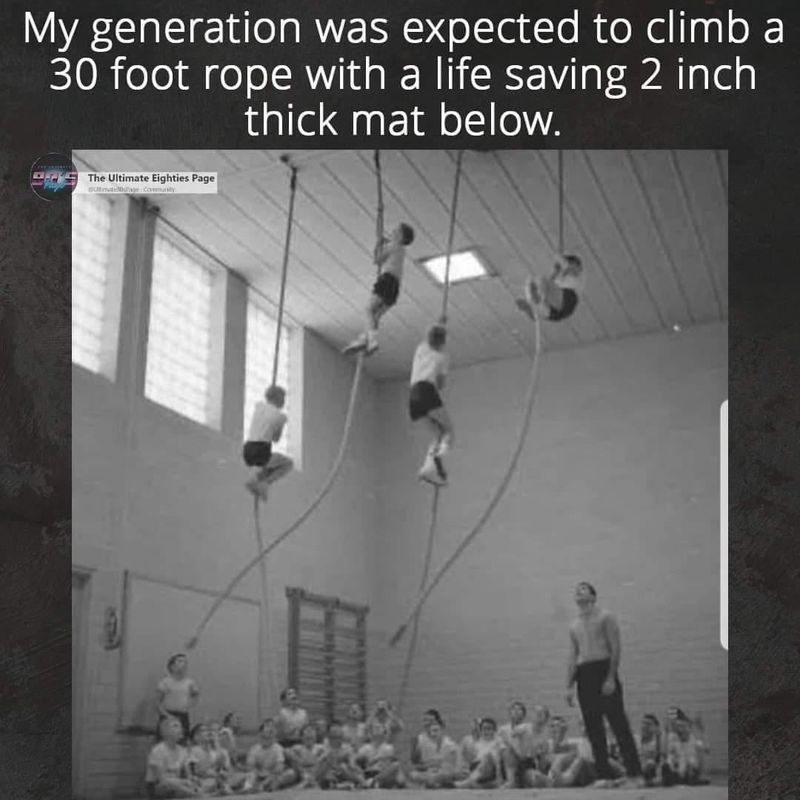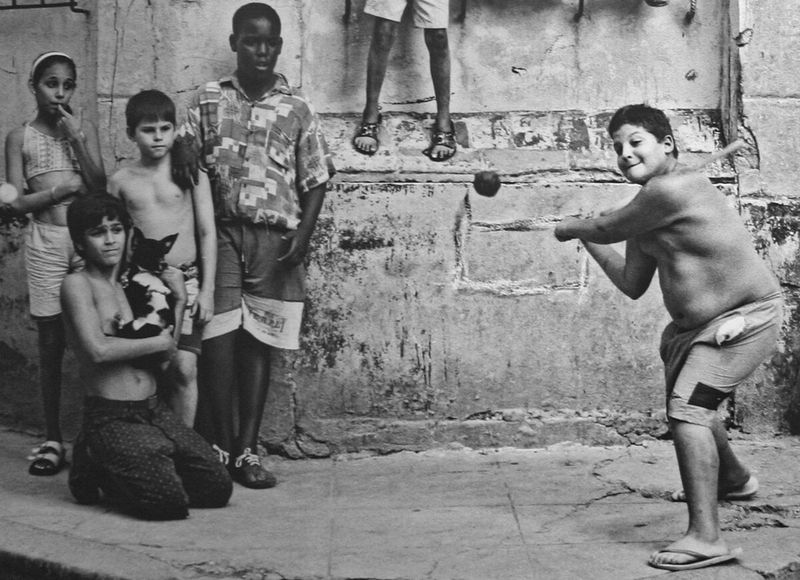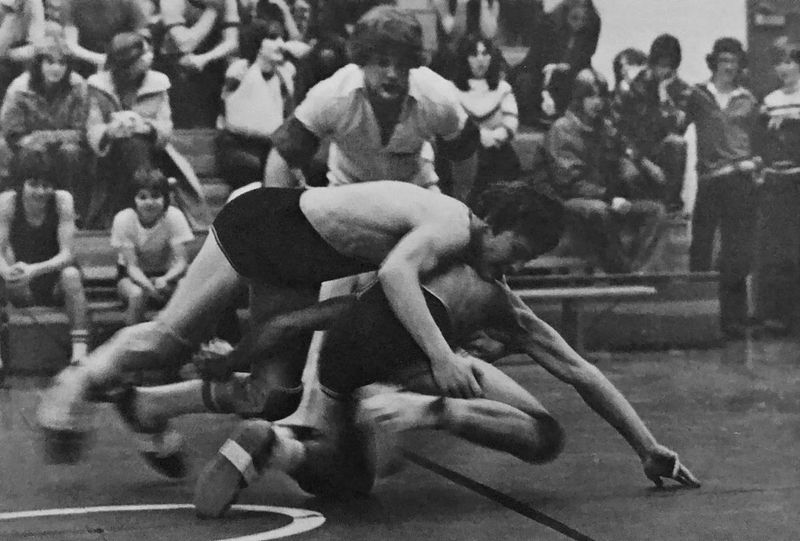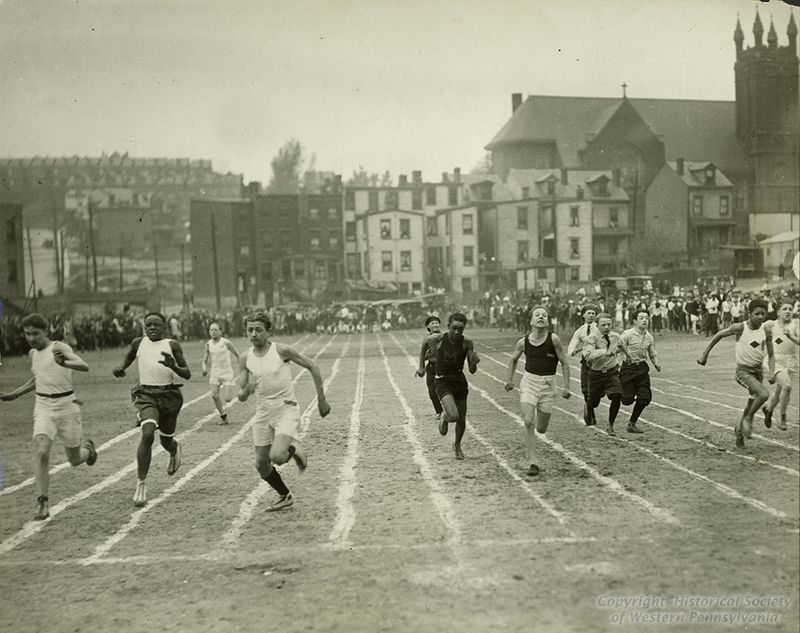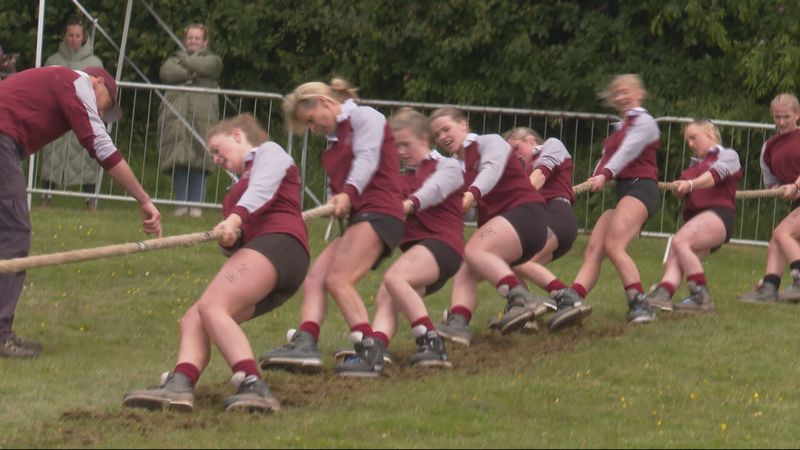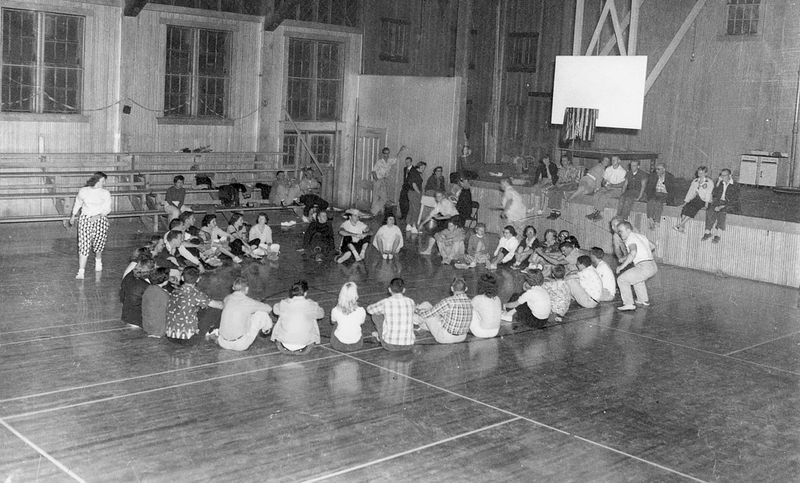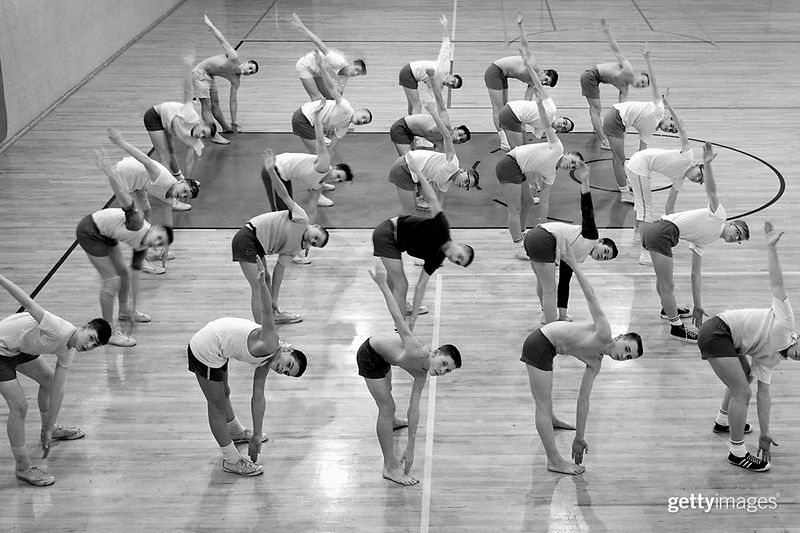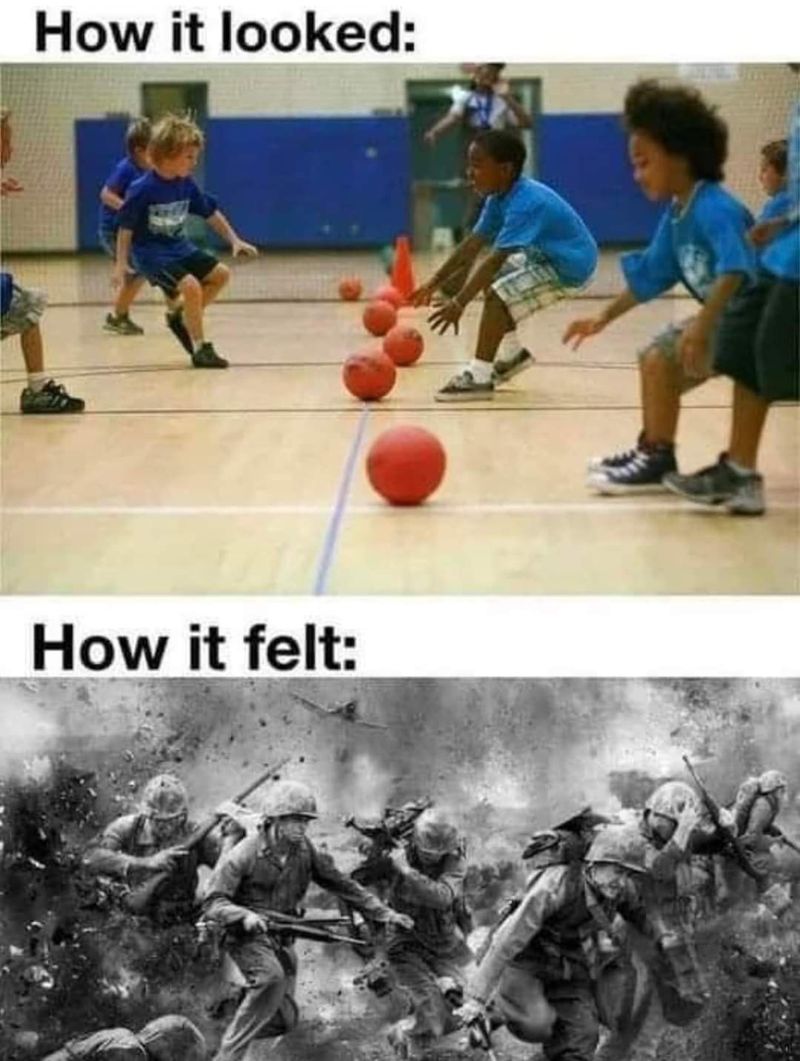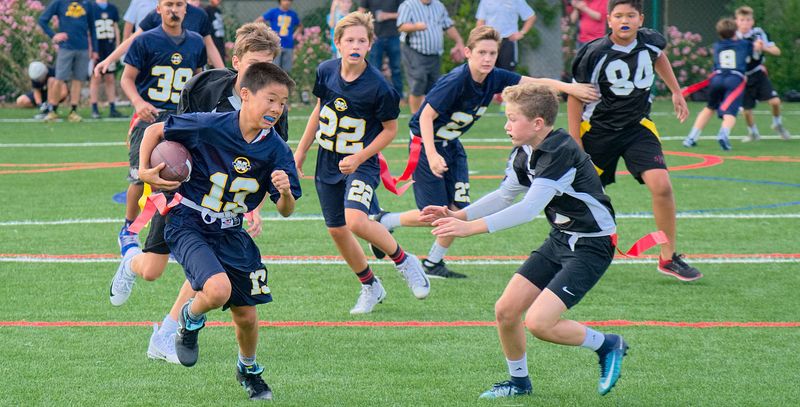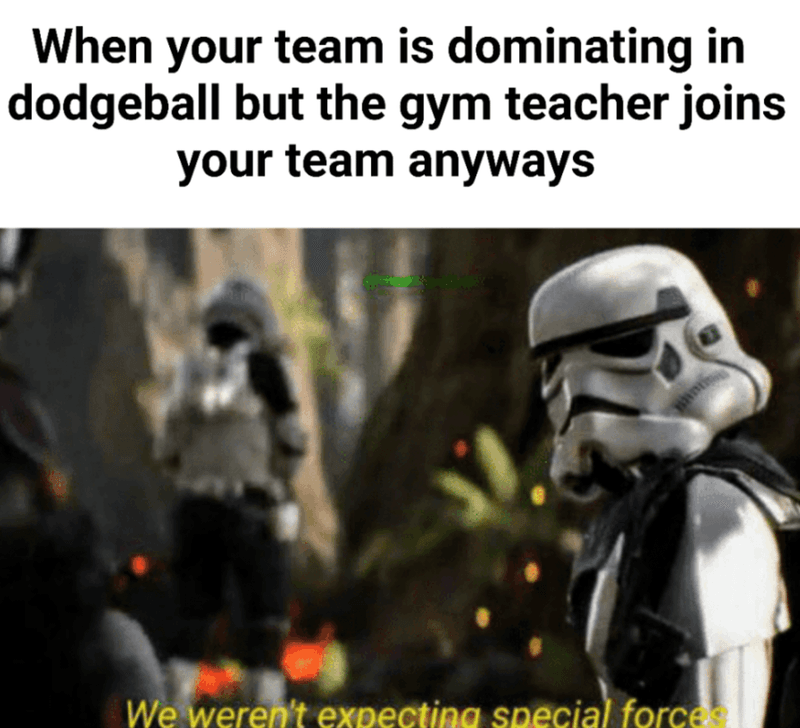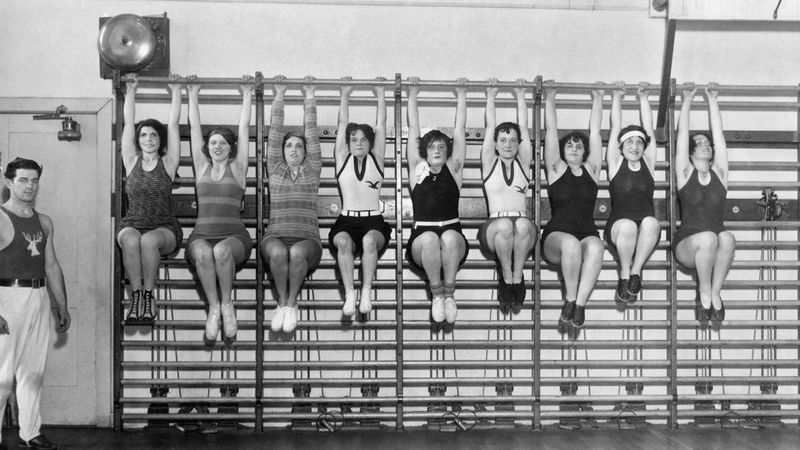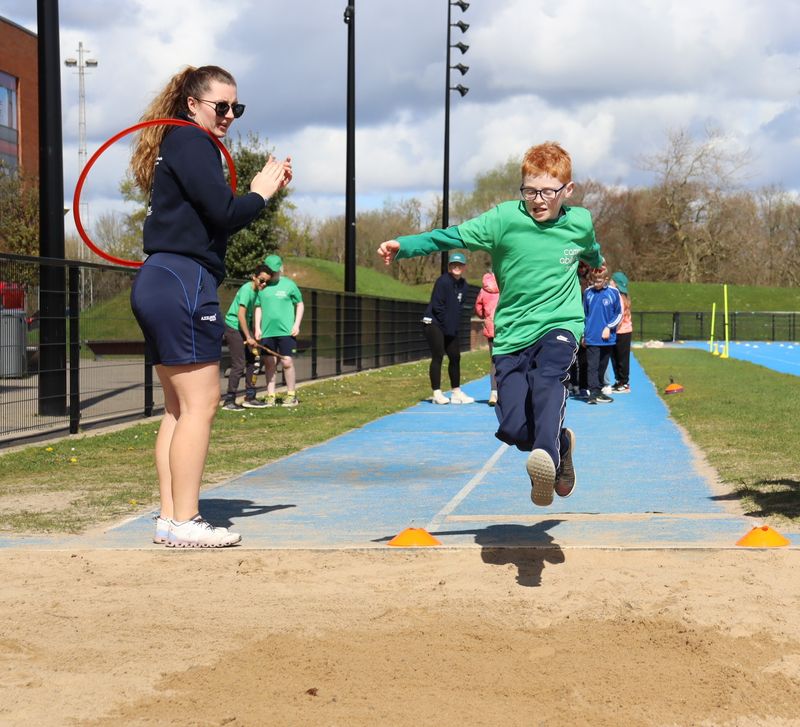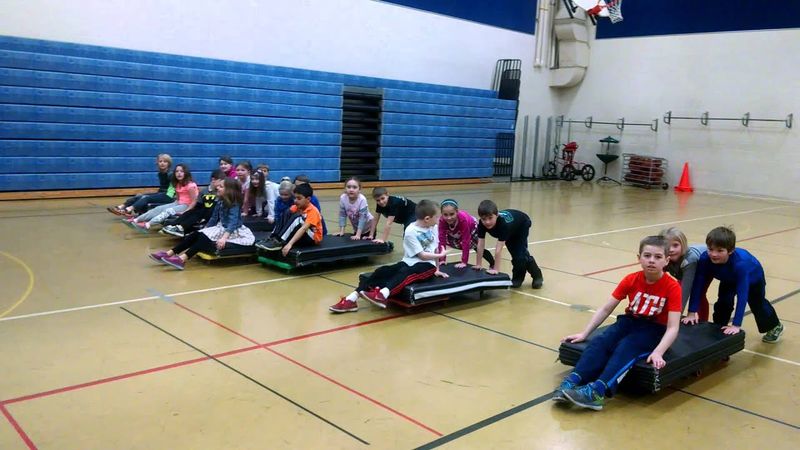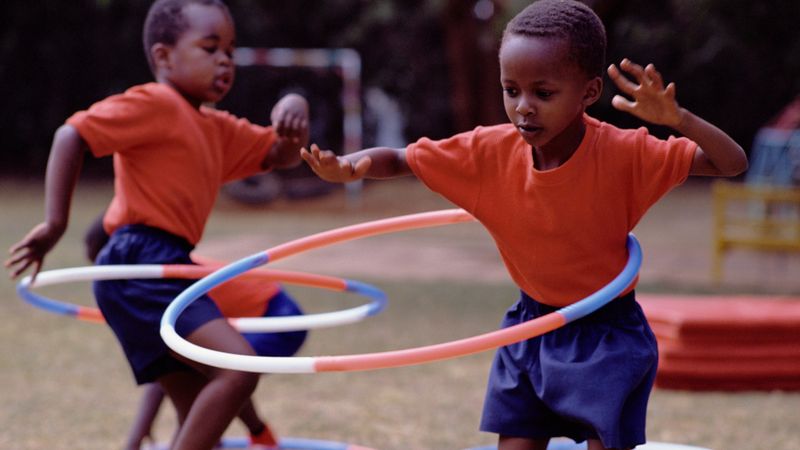Gym class used to be a wild arena of activities that seemed completely normal at the time but would raise eyebrows today.
From the rough and tumble nature of dodgeball to the public spectacle of picking teams, many gym class practices from the past would not fly in today’s more safety-conscious and inclusive world.
Let’s explore 18 of these bygone practices that were once staples in gym classes across the country.
1. Dodgeball with No Mercy
Remember the thrill of dodgeball? Back in the day, getting hit square in the face with a rubber ball was just part of school life.
There were no soft foam balls, just rubber ones that left a red mark. Some kids took pride in their throwing speed, aiming with all their might.
Dodging wasn’t just an option; it was a survival tactic. Today, such a game would be considered too aggressive and risky. Schools now opt for softer materials to ensure safety and fun. Oh, the tales of survival from the dodgeball court!
2. Climbing the Rope Without Safety Mats
Rope climbing is a traditional gym activity that tested strength and courage. But back then, there were no thick safety mats beneath to break a fall. If you slipped, you’d meet the unforgiving hardwood floor. It was nerve-wracking and thrilling, especially when reaching the top.
These days, such an activity would require layers of safety measures. Mats are essential, and supervision is strict. While climbing ropes still challenge students, the emphasis on safety ensures fewer injuries. It’s a testament to how times have changed for the better in school sports.
3. Picking Teams the Brutal Way
Team picking used to feel like a gladiator selection. Captains, usually the most athletic, picked their teammates one by one. Those last to be chosen often felt embarrassed, standing awkwardly as peers were picked. It was a brutal assessment of popularity and skill.
Nowadays, educators strive for inclusivity, randomly assigning teams or using number systems to ensure no one feels left out.
The focus is on teamwork and participation rather than raw skill and social hierarchy. This shift helps foster a more supportive and positive environment for all students.
4. Shirtless Skins vs. Shirts Games
Back in the day, boys would often split into ‘skins’ and ‘shirts’ for team games. Going shirtless was the norm, a way to clearly divide teams. The practice was accepted without question, though it occasionally led to discomfort and teasing.
In modern schools, this practice is phased out due to privacy and inclusivity concerns. Now, colored bibs or pinnies are used to distinguish teams, ensuring everyone feels comfortable and respected.
This change reflects a broader shift towards creating a more considerate and inclusive environment in school sports.
5. Wrestling Class Without Protective Gear
Wrestling matches in gym class were raw and intense, often held without any protective gear. Students would grapple and pin each other down, hoping to emerge victorious. The lack of helmets or pads meant that injuries were common.
Today, wrestling involves strict safety protocols. Proper gear is mandatory to protect against head injuries and other risks.
The focus has shifted to learning techniques safely, ensuring students enjoy the sport without unnecessary danger. This evolution highlights the increased focus on student welfare in physical education.
6. Running Laps as Punishment
Running laps was a common punishment for misbehavior in gym class. Coaches demanded students run around the gym until they were exhausted, often leading to feelings of resentment and discouragement.
Today’s schools recognize the importance of fostering a positive relationship with physical activity. Punishing students through exercise is discouraged, as it can create negative associations with being active.
Instead, educators focus on promoting fitness as a fun and rewarding experience, encouraging students to embrace physical activity for its health benefits and enjoyment.
7. Jumping Over Vaulting Horses
Vaulting horses in gym class presented a thrilling challenge. Kids would run full speed, leap, and hope to clear the horse without incident. The absence of safety mats made it a daring feat, where miscalculations led to painful landings.
Today, safety is paramount. Vaulting horses are used with caution, surrounded by mats and supervised closely.
The emphasis on safety gear and proper technique ensures students can enjoy the physical challenge without undue risk. This change underscores the evolving standards of safety in school sports programs.
8. Co-Ed Tug-of-War Battles
Tug-of-war was a staple of gym classes, often featuring co-ed teams. The combined strength of boys and girls pulling against each other was a sight to behold. However, these battles frequently ended with the losing side toppling over, sometimes onto hard surfaces.
Today, such activities are organized with more consideration for safety and fairness. Soft surfaces and carefully monitored games ensure everyone participates safely.
This reflects a broader commitment to ensuring enjoyable and inclusive experiences for all students, regardless of physical strength or gender.
9. No Water Breaks
In the past, gym classes often went by without scheduled water breaks. Thirsty? You had to wait until the end of class. This lack of hydration was seen as normal, despite the obvious discomfort it caused.
Modern understanding of hydration’s importance has changed this practice drastically. Water breaks are now a standard part of gym class routines, ensuring students stay hydrated and healthy.
This shift highlights the improved understanding of student health needs, reflecting a move towards more supportive and well-being-focused education environments.
10. Barefoot Gymnastics on Hardwood Floors
Gymnastics without mats was a test of balance and bravery. Kids performed routines barefoot on hardwood floors, hoping not to slip or fall. The absence of proper flooring protection meant any mistake could lead to scrapes or bruises.
Nowadays, gymnastic activities prioritize safety with cushioned mats and proper footwear.
This ensures students can develop their skills without the added risk of injury. The focus on safety equipment highlights the shift towards creating a secure and supportive environment for physical education classes.
11. Dodgeball with Heavy Leather Balls
Before the rubber balls, dodgeball was played with heavy leather ones. These balls were less forgiving, making dodging an essential skill. Getting hit by one left more than just a red mark; it was an experience you remembered.
Today, the game has evolved with softer, safer balls, focusing on fun rather than pain.
The shift in equipment reflects a commitment to student safety, ensuring that everyone can participate in gym activities without fear of injury, while still enjoying the competitive spirit of the game.
12. Tackling in Flag Football
Flag football was intended as a non-contact sport, but often devolved into tackle football. Kids, caught up in the excitement, would forget the rules and go for tackles, risking injuries in the process.
Today’s approach to flag football emphasizes the non-contact nature of the game, strictly enforcing rules to prevent tackling.
This ensures that students can enjoy the sport without fear of injury, fostering a positive experience that encourages participation and sportsmanship. The focus on safety and rule adherence reflects broader changes in school sports policies.
13. Teachers Playing (and Dominating) in Games
Gym teachers sometimes joined student games, playing with the skill and vigor of professional athletes. While fun, it often left students feeling outclassed and overshadowed.
Modern gym classes focus more on student participation and skill development, with teachers taking a guiding rather than competing role.
This shift ensures students feel encouraged and capable, fostering a more inclusive and supportive environment where the emphasis is on learning and enjoyment rather than competition with authority figures.
14. Doing Pull-Ups Until You Failed
Pull-up tests pushed students to their limits, with many trying until their arms gave out. This grueling exercise often left kids feeling defeated rather than accomplished.
Nowadays, physical fitness tests are more balanced and supportive, encouraging improvement at personal levels rather than direct competition.
Emphasis on individual progress and realistic goals helps students develop a healthier relationship with fitness. This approach supports a more inclusive environment where every student’s effort is recognized and celebrated, fostering self-esteem and physical wellness.
15. Long Jumps Onto Concrete
Long jumps in gym class used to end on concrete surfaces, challenging students to land safely or risk scrapes and bruises. It was an exciting test of skill, but the hard landing made it risky.
Today, such activities are performed on cushioned surfaces, with techniques taught to ensure safety. This change highlights the increased focus on student safety and injury prevention, allowing kids to enjoy the thrill of physical challenges while minimizing risks. The shift reflects a broader emphasis on well-being in school sports.
16. No Helmets for Scooter Board Races
Scooter board races were thrilling but chaotic, often resulting in crashes and injuries. Without helmets, students risked bumps and bruises as they zoomed across the gym floor.
Today, safety gear is a must for such activities, ensuring that students can enjoy the fun without undue risk. Helmets and pads provide protection, while structured races minimize chaos.
This focus on safety highlights the ongoing commitment to creating secure environments where students can experience the joy of movement without fear of harm.
17. Hula Hoop and Jump Rope Competitions That Lasted Forever
Endurance competitions like hula hooping and jump roping pushed students to their limits, often lasting the entire class period. While fun, they were exhausting and sometimes demoralizing.
Today, such activities are balanced with rest and variety, focusing on fun and skill development rather than sheer endurance.
This change ensures that all students can participate and enjoy the experience, promoting active lifestyles in a more supportive and engaging way. It reflects a broader shift towards wellness and enjoyment in physical education.
18. Lack of Supervision During Free Play
Free play often meant kids running wild with minimal supervision. While it encouraged creativity, it also led to risky behavior and injuries, as children pushed boundaries without guidance.
Today, structured supervision ensures that free play remains safe and enjoyable. Educators provide oversight, balancing freedom with safety to allow creativity while minimizing risks.
This approach reflects a greater understanding of child development and the importance of providing safe environments for exploration and play, fostering well-rounded growth in students.
